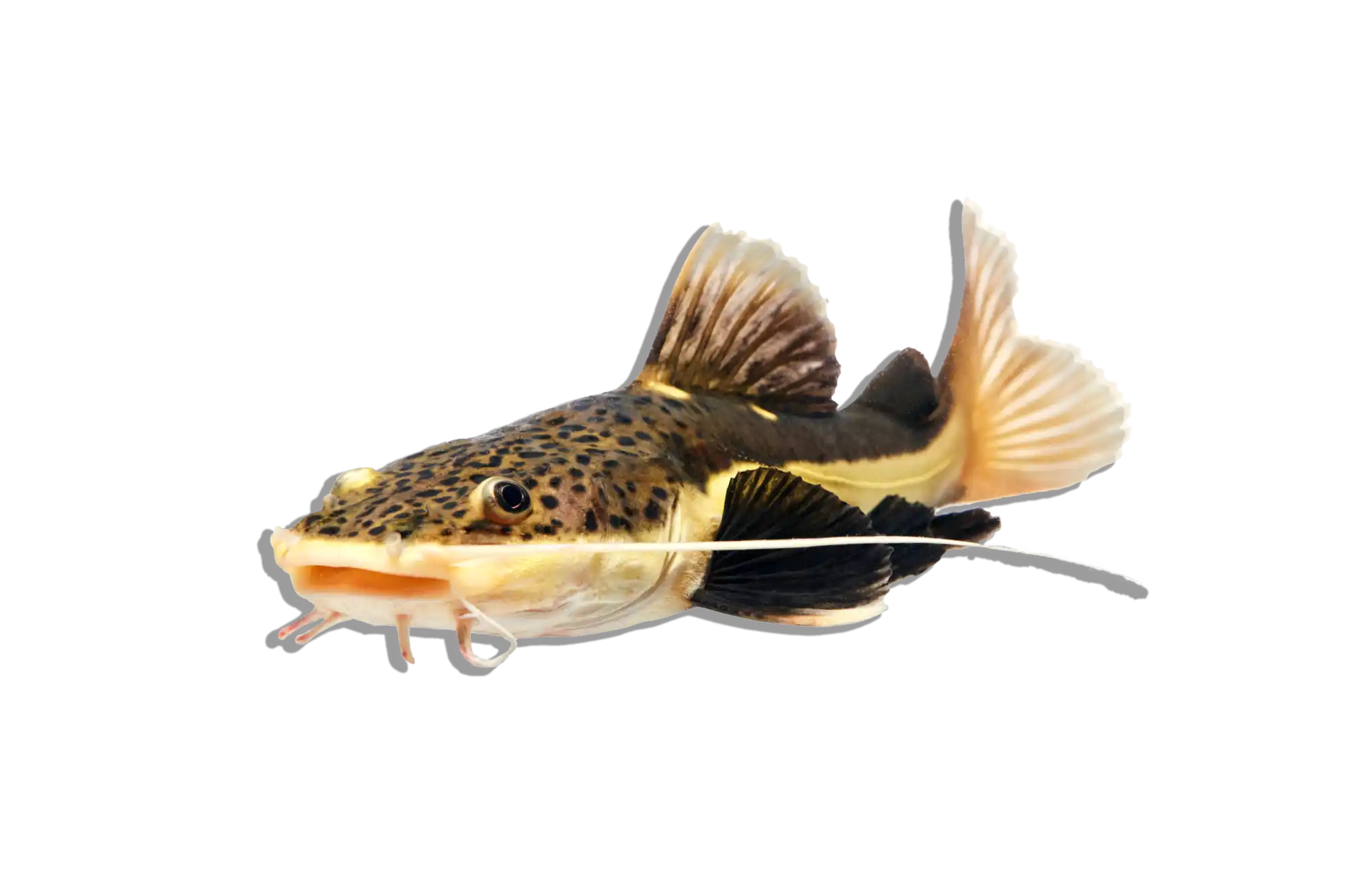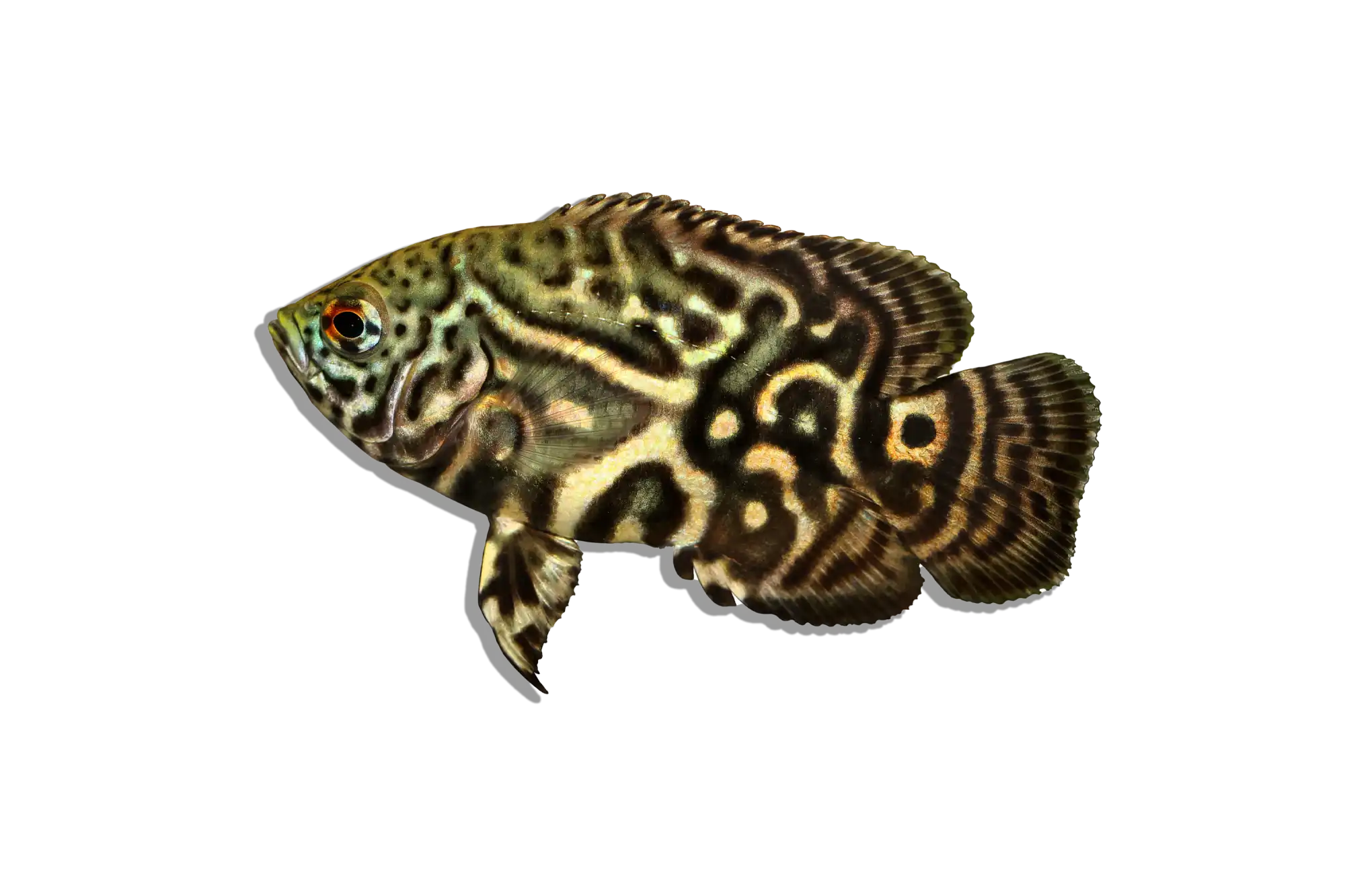Description
Common Name: Juruense Catfish
Scientific Name: Brachyplatystoma juruense
Other Names: Zebra Shovelnose Catfish, Zebra Catfish, Juruense Shovelnose
Description:
The Juruense Catfish is a visually striking freshwater fish known for its bold, zebra-like patterning. It has a streamlined body with alternating black and white vertical stripes that run from its head to its tail. Its body shape is elongated, and it features long whisker-like barbels that help it navigate and locate food in its environment. This species is particularly appealing in an aquarium setting due to its unique appearance and active behavior.
Habitat and Distribution:
The Juruense Catfish is native to the Amazon River basin in South America, particularly in countries such as Brazil and Peru. They are commonly found in large rivers, deep channels, and areas with strong currents. These fish prefer sandy or rocky substrates and areas with submerged driftwood and debris, which provide hiding spots and foraging grounds.
Size and Lifespan:
In the wild, Juruense Catfish can grow up to 24 inches (60 cm) or more. In captivity, they typically reach about 18-20 inches (45-50 cm). Their lifespan ranges from 10 to 15 years with proper care, including a suitable diet and clean water conditions.
Diet and Behavior:
Juruense Catfish are carnivorous and primarily feed on smaller fish, crustaceans, and aquatic invertebrates in their natural habitat. In an aquarium, they should be provided with a diet of live or frozen foods such as fish, shrimp, and high-quality carnivorous pellets. It is important to avoid feeding them saltwater foods like shrimp, krill, or seafood. These catfish are nocturnal hunters and are most active at night. They are generally peaceful towards other large fish but can be territorial and aggressive towards smaller tank mates.
Breeding and Reproduction:
Breeding Juruense Catfish in captivity is rare and difficult due to their size and specific environmental needs. Little is documented about their breeding habits in the wild. Successful breeding typically requires very large, well-maintained tanks with optimal water conditions and plenty of hiding spots. Captive breeding is often undertaken by experienced aquarists or specialized breeding operations.
Aquarium Care and Tank Requirements:
Due to their large size and active nature, Juruense Catfish require a very large aquarium, with a minimum of 150-200 gallons recommended for adult specimens. The tank should be equipped with efficient filtration, strong water flow, and regular water changes to maintain water quality. Providing a naturalistic environment with plenty of hiding spots, such as rocks, driftwood, and large caves, will help reduce stress and encourage natural behavior. Water temperature should be maintained between 75-82°F (24-28°C), with a pH of 6.0-7.5 and moderate hardness.
Ideal Tank Mates:
Juruense Catfish can be kept with other large, peaceful fish that share similar water parameter requirements. Suitable tank mates include large cichlids, other large catfish, and similarly robust species. Avoid housing them with smaller or delicate fish that may become targets of predation or bullying.
Difficulty Level:
Advanced. Keeping Juruense Catfish requires a deep understanding of their needs, including their large size, nocturnal behavior, and specific water quality requirements. They are best suited for experienced aquarists with the space and resources to provide proper care.
Water Parameters:
- Temperature: 75-82°F (24-28°C)
- pH: 6.0-7.5
- General Hardness (GH): 5-15 dGH
- Carbonate Hardness (KH): 4-10 dKH
- Ammonia: 0 ppm (ideal), up to 0.25 ppm (max)
- Nitrite: 0 ppm (ideal), up to 0.25 ppm (max)
- Nitrate: <20 ppm (ideal), up to 40 ppm (max)
Additional Information:
- The Juruense Catfish’s distinctive zebra-like pattern and active swimming behavior make it a captivating addition to any large aquarium.
- They are known for their strong swimming abilities and require plenty of open space to move around.
- In their natural habitats, Juruense Catfish play a role as apex predators, helping to control populations of smaller fish and invertebrates.
- Fun fact: The long barbels of the Juruense Catfish are highly sensitive and help them detect prey in the dark, murky waters of their natural habitat.




















